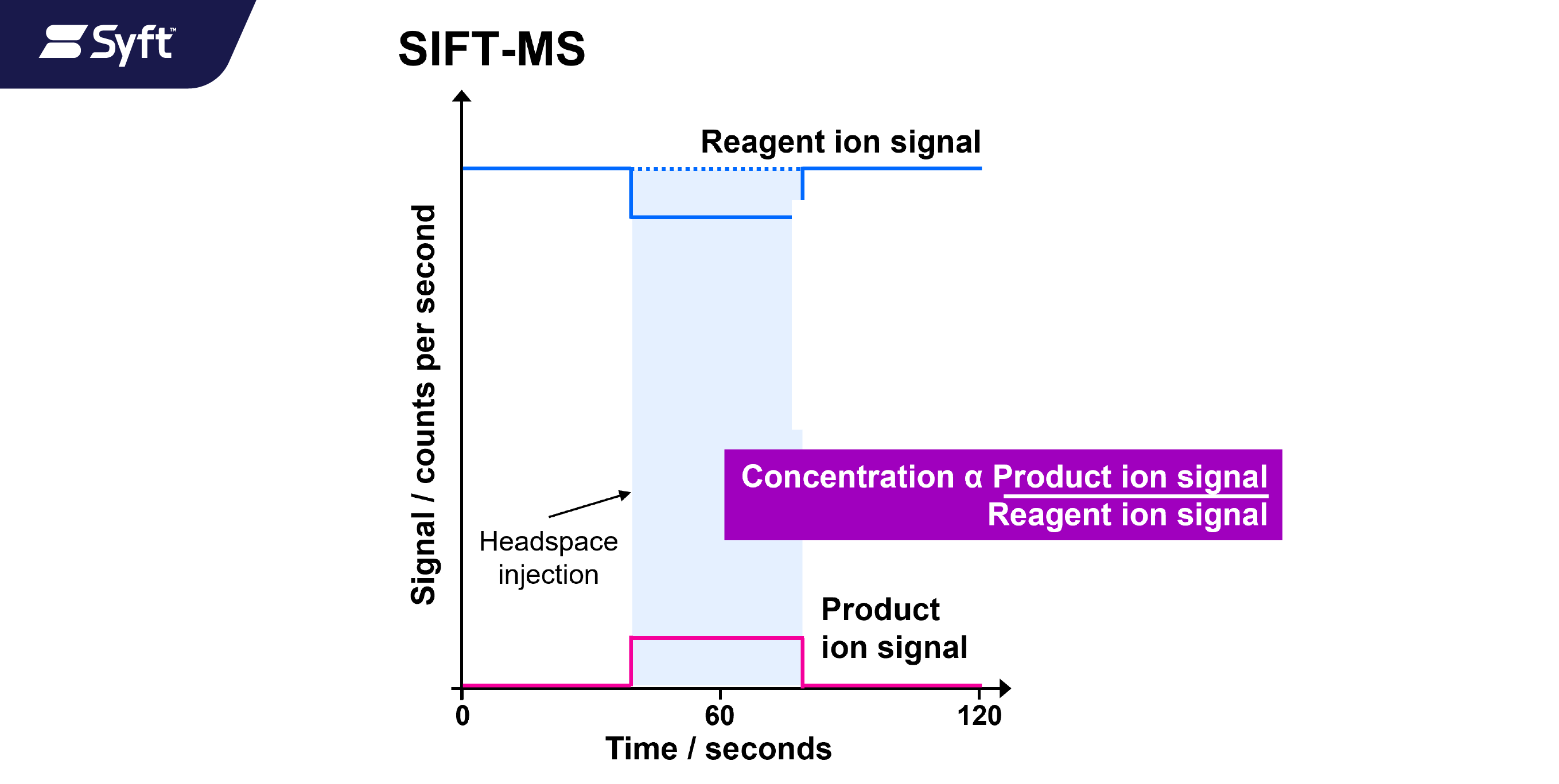
The characteristic flexibility, stability, high throughput, and fast time to report analytical results of the Syft Tracer TM next-generation SIFT-MS instrument apply across multiple headspace approaches for diverse matrices. This application note briefly summarizes the use of (1) dissolution, (2) multiple headspace extraction (MHE), and (3) the method of standard additions, then provides a guide for identifying the appropriate headspace approach for various matrices. For contract drug manufacturing organizations (CDMOs) and contract research organizations (CROs) with short or long sample runs on diverse volatiles and matrices, Syft Tracer TM provides a uniquely productive and cost-effective analytical solution.
Syft TracerTM exploits the latest advancements in selected ion flow tube mass spectrometry (SIFT-MS) technology to revolutionize workflows and maximize productivity for diverse volatile impurities (Langford and Perkins (2023), Langford, Silva, and Perkins (2023)). The ultra-soft chemical ionization in SIFT-MS provides the foundation on which flexible, stable analysis with high throughput and fast time to report results are delivered from one instrument configuration (Langford and Perkins (2023), Perkins and Langford (2023a)) – in stark contrast to conventional chromatographic techniques. This application note demonstrates the breadth of headspace approaches – across diverse matrices – that are compatible with automated Syft TracerTM instruments:
- Dissolution, for water soluble articles and those soluble in at least six organic solvents,
- Multiple headspace extraction (MHE) across diverse matrices, and
- The method of standard additions, for emulsions and samples that exceed the SIFT-MS instrument’s dynamic range for static headspace or MHE analysis.





